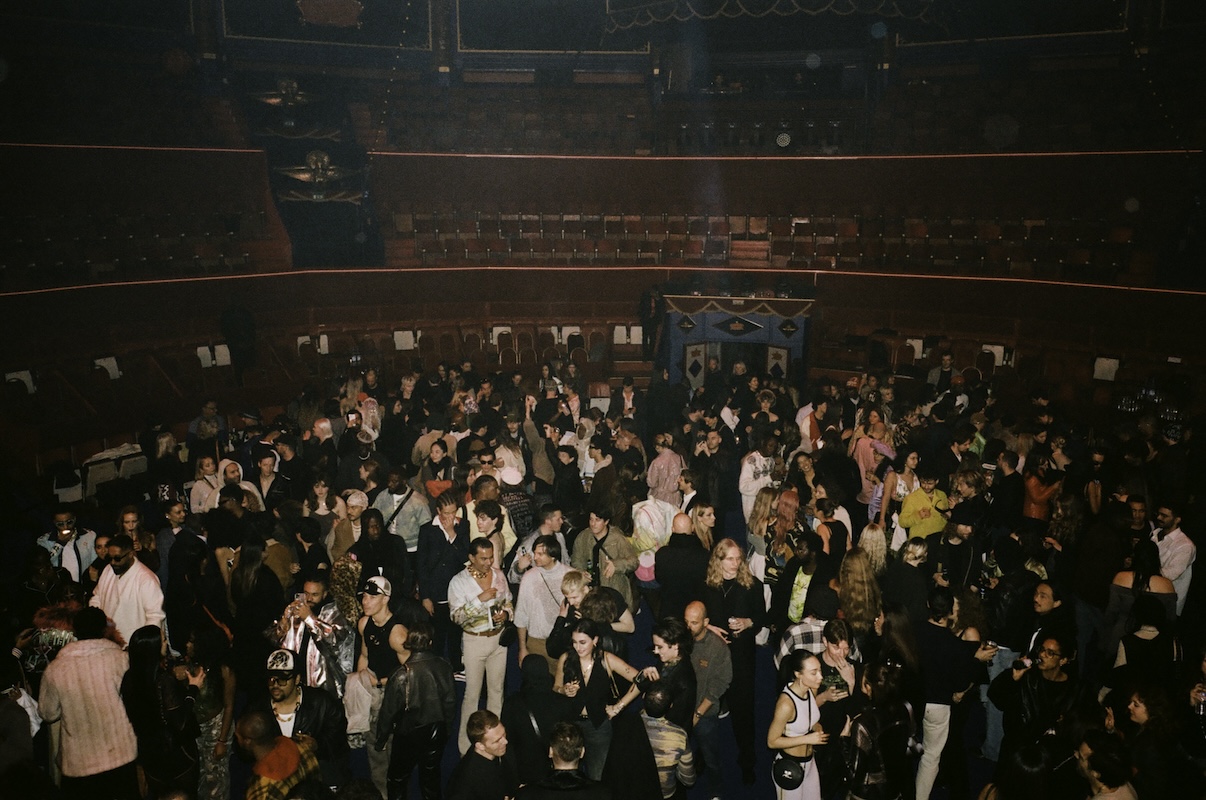The world of fragrance is a place for imagination, translation, and time travel. With the right olfactory trick, it can take you to new places, or bring you back to familiar ones. The strength of this idea, coupled with a very personal approach, was Ben Gorham’s start for something new. That something was BYREDO.
Born to an Indian mother and a Canadian father, Gorham grew up in Toronto, New York, and Stockholm. A basketball player turned art school graduate, he decided to put his fine arts degree to use and create fragrance, not paintings, after he met the Swedish perfumer Pierre Wulff by chance and the path of his life changed.
In 2006, Gorham founded BYREDO in Stockholm. The brand’s name, a portmanteau of the words “By” and “Redolence,” hinted at his fascination with fragrance immediately. His interest in expressing emotions, coupled with his dynamic heritage, was heightened by sourcing raw materials from Grasse and making unique scents in Sweden. A personal approach was then added—introducing materials to the ideas that were special to him, like his grandmother’s home for his latest Chai candle, and the journey to the end of time for the Eleventh Hour eau de parfum.
In addition to its fragrance, BYREDO is recognized in more than 40 countries for its home goods, leather products, and accessories, and admired for an array of interesting collaborations, too. Past projects include working with the visual creative studio M/M Paris, the photo studio Inez & Vinoodh, the contemporary artist Carsten Höller, and fashion brands like Off-White, Frame, and Oliver Peoples.
Whitewall spoke with Gorham about the brand’s evolution, why sustainability is vital, and why modern luxury must remain authentic.
WHITEWALL: When you founded BYREDO, you aimed to reinvent the world of luxury with emotion-driven creativity. Why?
BEN GORHAM: Initially in 2006, I was very interested in creating products that people connect to emotionally. I also felt that the idea of luxury was more related to price than maybe quality or reason for being.
WW: How would you describe how your brand came to fruition, and how it grew from fragrance since then?
BG: I would describe the BYREDO journey initially as quite naive, and purely creative. I understood later that I needed to create some form of commerce to be able to continue the work, and even though fragrance was my first kind of fascination, I always felt that the notion of BYREDO could have many facets, which today is maybe easier to see for other people.
WW: You graduated from an art school in Stockholm with a fine arts degree, but at 31 years old you met Pierre Wulff and decided to make fragrance instead of art. What was it about the fragrance world that drew you in and kept you in?
BG: After art school, I think I was very fascinated by smell and this idea that you could evoke as much emotion through this invisible medium. In the meetings with Pierre, I was able to explore my own memories through smells in a process that today—12 years later—is still inspiring.
WW: The duality of your ethnicity is seen translated in nearly all of your stores and designs. What about your parents truly influenced you that we see translated in BYREDO today?
BG: My ethnicity is an important part of my story, but what is also equally important is the fact that I lived and grew up in many places all over the world—it’s given me a true appreciation and understanding for the diversity of culture and people, something that informs all our work at BYREDO. I spent many years explaining to people that BYREDO was a multicultural brand, something that was hard to understand for people in the luxury segment as national identities often spoke for a company’s origin.
WW: You are recognized for your label, but also for your personal style and relationship to the fashion and arts worlds. How would you describe your personal style? Tell us a bit about your connection to the art world.
BG: My personal style varies. I grew up in the nineties, so I’m probably at heart a sneakers, T-shirts, and denim guy but also have a great appreciation for men’s tailoring, and I’m a general fan of fashion. I think my style is constantly kind of evolving and I enjoy using style as a way to express yourself. In terms of art, I’ve just been fortunate to know and meet super talented artists. They inspire and educate me to some point where they inspired and informed even the work at BYREDO in a very interesting way.
WW: In February during Paris Fashion Week, for your Fall/Winter 2019 collection, you presented “Rare Byrds of a Feather”—a backdrop for a new collection of leather goods. It was a three-part exhibition (with “Blueprint Byrds,” “Byrd Houses,” and “The Byrd Watcher”) that paid homage to Salim Ali (the legendary “Birdman of India”) and touched upon elements of Swedish and Indian bird-watching traditions. Tell us a bit about that.
BG: Culture is a great influence and inspiration at BYREDO, and bird-watching culture was one of those topics that I came in contact with through a very good friend of mine that truly fascinated me. The presentation of “Rare Byrds of a Feather” was comprised of a series of bags, apparel, accessories, and even these sculptural birdhouses that we designed for seven very specific birds found within these Indian sanctuaries founded by Salim Ali.
WW: For the occasion, you also presented new binoculars in collaboration with Swarovski, in an edition of 15. Can you tell us a bit about those?
BG: One of the things I learned in the research of this project was that Swarovski Professional, another division of Swarovski, actually makes the best binoculars in the world. We were fortunate enough to be able to partner with them on creating a specific edition of binoculars used by bird-watchers all over the world.
WW: Adding to your locations in Stockholm, New York, and London, you recently opened a Paris flagship at 199 rue Saint-Honoré. The historic location in the heart of the city is juxtaposed on the inside by seven exclusive posters covering the walls by M/M Paris’s co-founder Mathias Augustyniak, and large thermoformed Plexiglas framed works by Sarah Morris. You’re known for creating spaces that are reflective and embracive of its surroundings. So why this for Paris?
BG: In my mind, there are few things more Parisian that M/M Paris, which have been great collaborators of BYREDO for many, many years. When the opportunity to open a store in Paris presented itself, it seemed natural that I would enlist the help of our Parisian family. The street is known for its high-end luxury tenants, but I was very focused on creating a unique experience with a different backdrop and the handwork of M/M Paris became just that.
WW: Late last year, BYREDO came out with a new candle, the Masala Chai—a tribute to the tea ritual of the Indian subcontinent, made of pieces of black tea leaves infused in boiling milk. It was inspired, like your other designs, by a memory—this time, your grandmother’s home. Bring us back to that place and tell us what you wanted to include in this fragrance.
BG: The Chai candle was a very literal translation of this memory of my grandmother, who passed away when I was in my early teens. She was a special person in our life, and kind of my one true connection to India and Chembur, that place outside of Mumbai where my mother grew up. The smell for me brings a great deal of warmth and joy, and I hope people can build their own relationship to the smell.
WW: Your recent fragrance Eleventh Hour is “an exploration around the smell of things ending, a journey to the end of Time, the last perfume on Earth.” Why did you want to translate this?
BG: Eleventh Hour came out in a time when people were not as hopeful about the future as maybe past years. In that spirit, I explored this idea of what the last perfume on Earth may be. In a scenario of global flooding, it brought me to the highest point on Earth, the Himalayas, and I explored the indigenous raw materials of this place that could be used to make a perfume. I’m always looking for ways to explore emotions and ideas— some specific, some random, but I always strive for a sense of relevance in our work and I think the idea of Eleventh Hour resonated with people at that time.
WW: Where is the world of luxury heading? What do you think will continue to resonate more and more?
BG: I think the world of luxury will continue to evolve, maybe more than ever, considering the shift in culture. I think the idea of authenticity will become even more important.
WW: What is modern luxury to you?
BG: Modern luxury is maybe more than ever about authenticity. I think we live in a very fast world where people are able to make products easier than ever, but I think authenticity has depleted within the context of luxury.
WW: Does sustainability ever come into question when you’re designing?
BG: Sustainability is important in many respects. For BYREDO the idea manifests itself through quality and products that truly have a reason for being. I believe it’s sustainable to buy less products of higher quality that last longer, and I would probably describe that as our approach to that idea.
WW: What are you working on now?
BG: I am currently working on a presentation that we will do during Paris Men’s shows. The concept revisits my past life, and BYREDO will be exploring categories such as men’s tailoring, footwear, and accessories in a very interesting format.
WW: Is there something you haven’t yet created but hope to in the future?
BG: I always dreamed about designing a car truly from scratch. That’s probably one I’ll dream about for a very long time.









